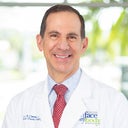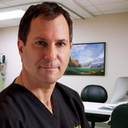Posted underEyelid Surgery q&a
I am 3 and a half weeks post transconjunctival lower blepharoplasty. How do I decrease puffiness at this stage?
I am puffed up in the am and depuff by the afternoon to bags in lower part of lower lid. But this is still worse than I was preop. What can I do to get rid of this fluid?
Answers (8)
From board-certified doctors and trusted medical professionals
Dr. Ross A. Clevens, MD, FACS

Dr. Ross A. Clevens, MD, FACS
Board Certified Facial Plastic Surgeon
Answer
Dr. Boris M. Ackerman, MD

Dr. Boris M. Ackerman, MD
Board Certified Plastic Surgeon
Answer
Dr. Kenneth D. Steinsapir, MD

Dr. Kenneth D. Steinsapir, MD
Oculoplastic Surgeon, Board Certified in Ophthalmology
Answer
Dr. Fernando Colon, MD

Dr. Fernando Colon, MD
Board Certified Plastic Surgeon
Answer
Dr. Steven Wallach, MD
Dr. Steven Wallach, MD
Board Certified Plastic Surgeon
Answer
Dr. Chad Robbins, MD
Dr. Chad Robbins, MD
Board Certified Plastic Surgeon
Answer
Dr. Dan Landmann, MD
Dr. Dan Landmann, MD
Oculoplastic Surgeon, Board Certified in Ophthalmology
Answer
Dr. Sara A. Kaltreider, MD (retired)
Dr. Sara A. Kaltreider, MD (retired)
Oculoplastic Surgeon, Board Certified in Ophthalmology
Answer
More Eyelid Surgery Questions
See all Eyelid Surgery Q&AWE SEND PRETTY
EMAILS
What’s trending? Who’s turning heads? Which TikTok myths need busting? We’ve got you. No fluff, no gatekeeping—just real talk. Get our free, unfiltered newsletter.